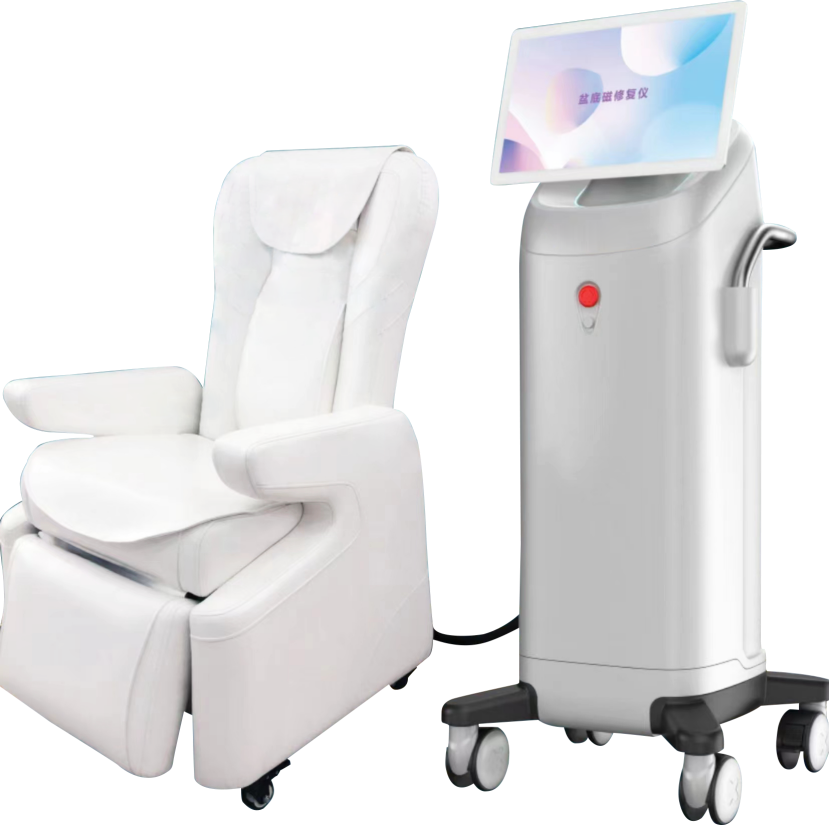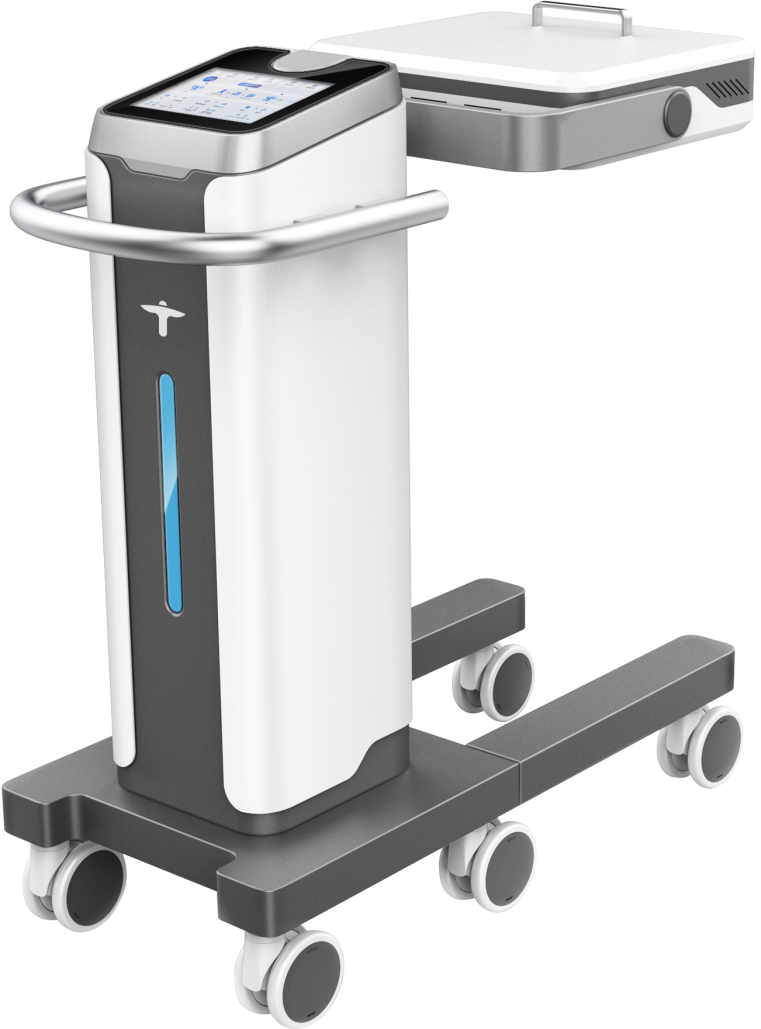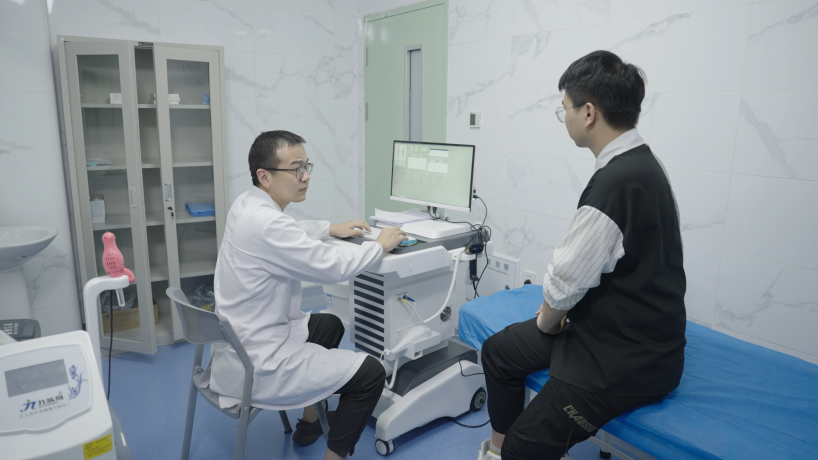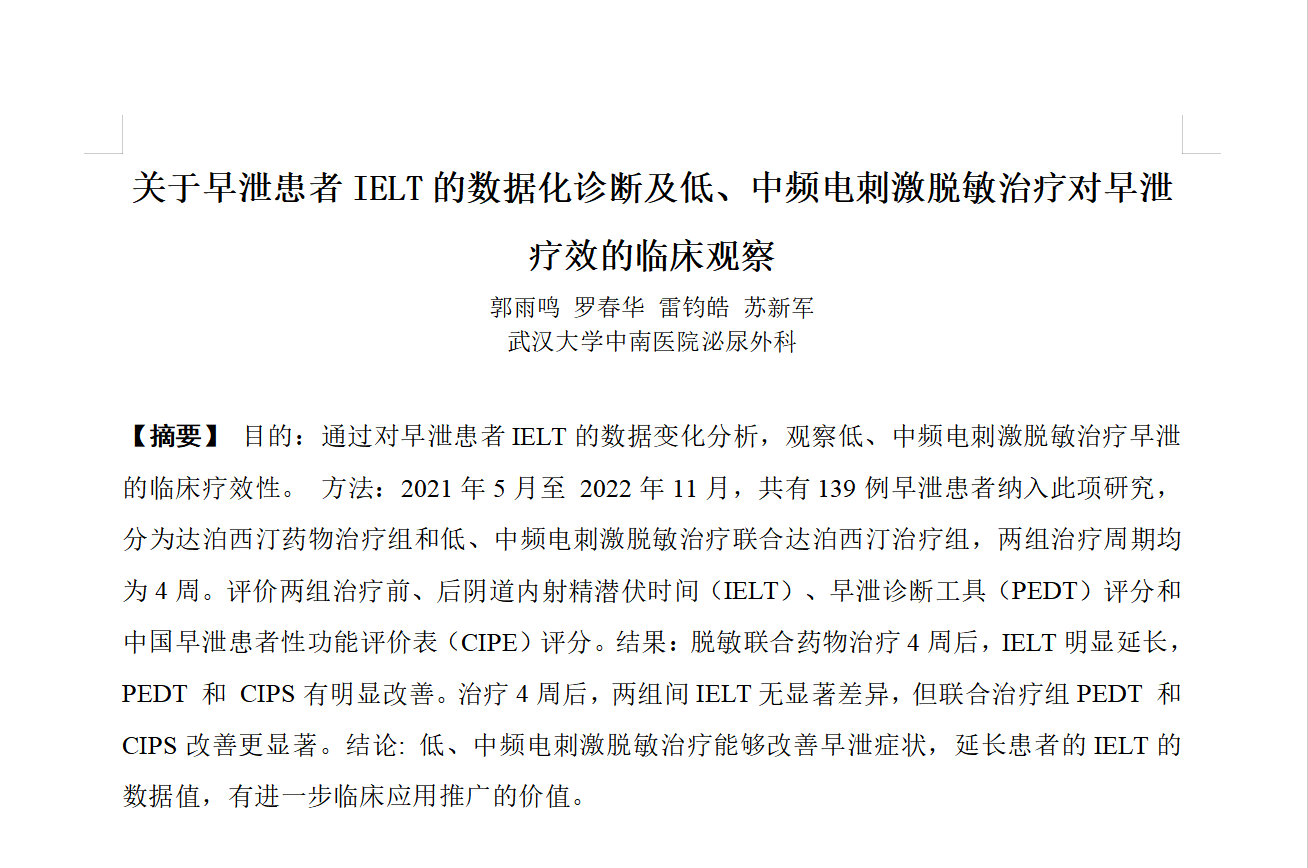
Case Study Sharing
Case sharing

A magneto-optical-electrical fusion solution empowers multiple clinical departments.
Release date:
2024-02-03 16:13
Source:
If we compare humans to robots, the nervous system within the human body would be like the electrical circuitry that powers a robot, while the human brain acts as the robot’s power source—and our heartbeat resembles something driven by voltage. 2015 Year The U.S. Department of Defense's Advanced Research Projects Agency has launched a highly forward-thinking study.
The U.S. Department of Defense's Advanced Research Projects Agency has named this initiative ElectRx , aiming to explore how light, sound waves, magnetism, and voltage can aid in treatment. The Defense Advanced Research Projects Agency stated that it will allocate funding to the seven teams overseeing the program.
ElectRx The project manager Doug Weber He's a biomedical engineer, and he says: “ The peripheral nervous system transmits a wealth of sensory and motor signals that help monitor our health—and ensure our body functions properly by reflecting changes in brain activity and organ performance. ”
“ We hope this technology can detect the onset of diseases and, by stimulating peripheral nerves, help regulate brain activity. , Spinal cord and organ functions restore bodily health. ”
Weber Say: “DARPA The plan envisions a comprehensive system. , It can be used to treat chronic pain, inflammation, and other conditions that traditional therapies have been unable to address. ” Therefore , This initiative not only explores inflammation in the body but also investigates how to stimulate the sympathetic nervous system effectively. Injured At the time , Reduce fear and anxiety. The sympathetic nerve is the longest cranial nerve. , The parasympathetic nervous system, which functions as a secondary control mechanism, regulates both psychological and visceral activities.
Based in the United States ElectRx Plan, in the medical field Using the peripheral nervous system as a mediator to treat diseases is almost entirely new. Development direction , with enormous potential , which holds significant importance for medical advancements worldwide. The Jiutou Niao Medical Group has positioned this as a key strategic direction for the future development of medical devices, relentlessly striving forward with determination. Persist Guided by a value-driven approach to technological innovation, we are leading the establishment of a joint center for magneto-optoelectronic applications. This initiative aims to break through technical barriers, focusing on cutting-edge global scientific and technological advancements to conduct foundational and forward-looking research in the magneto-optoelectronics field—and ultimately drive the development and progress of magneto-optoelectronic technologies in the medical sector.
The Magnetic-Optoelectronic Joint Application Center (referred to as the MagOpto Center) is a medical device R&D center currently being established in collaboration between the group and leading directors from several top-tier Grade-III hospitals, along with numerous industry professors. Its mission is to address critical public health needs by focusing on cutting-edge global technologies and conducting foundational, forward-looking innovation research in the field of magneto-optoelectronics. 。

Focusing on optoelectromagnetic technologies, we have meticulously developed advanced equipment such as semiconductor lasers, electrophysiological devices, and magnetic stimulators, which find applications across a variety of medical specialties—including urology & andrology, gynecology and pelvic floor rehabilitation, psychiatry, and cardiovascular & cerebrovascular medicine. We are steadily advancing the integration of magneto-optical-electrical technologies to drive innovation and progress in the healthcare sector. Looking ahead, we believe that these cutting-edge technologies will soon become an indispensable pillar of the medical technology strategic framework. Moreover, the future development of combined magneto-optical-electrical application techniques promises to deliver profound advancements and transformative changes to the medical community.
In the field of magnetic stimulation therapy, pelvic magnetic therapy is being pursued as a primary research and development focus, utilizing functional magnetic stimulation ( FMS) This technology, rooted in Faraday's principle of electromagnetic induction, works by rapidly discharging high-voltage, high-energy currents through magnetic field coils, generating a strong magnetic field that is directed toward human tissues for therapeutic purposes. Notably, the magnetic field can penetrate tissues with high impedance—such as bone and fat—without significant loss of strength. The induced current within the tissue is directly proportional to its conductivity: since skin, fat, or bone exhibit high impedance, the resulting induced current remains minimal, effectively sparing pain-sensitive nerve receptors from activation. As a result, magnetic stimulation typically causes little to no discomfort. Faraday’s principle of electromagnetic induction further dictates that when tissues are subjected to pulsed magnetic stimulation, they generate an opposing induced current, which alters the electrical potential across cell membranes. If the intensity of this induced current surpasses the excitation threshold of neural tissues, it triggers local depolarization of nerve cells, leading to the initiation of an action potential and subsequently setting off a cascade of physiological and biochemical responses.

In the field of light-stimulation therapy, researchers have built upon the traditional understanding of how red and blue light spectra influence human biology, refining the approach by employing cutting-edge, low-intensity lasers that deliver targeted, deep-penetrating irradiation. These lasers feature a narrow divergence angle, ensuring precise directionality, while maintaining high energy density and substantial intensity—allowing them to penetrate the skin and effectively reach even the deeper layers of tissue. At low doses, these lasers trigger photothermal effects that stimulate therapeutic responses in the body, boosting metabolic activity and promoting the unblocking of meridians, thereby enhancing the circulation of qi and blood. This process not only dilates blood vessels in deep tissues, accelerating blood flow but also invigorates phagocytic cells, bolstering their ability to eliminate pathogens. Additionally, the laser treatment helps inhibit bacterial growth, facilitating inflammation resolution and supporting the body’s natural healing processes. Beyond these benefits, low-dose laser therapy has been shown to enhance red blood cell production, improve overall blood circulation, stimulate intestinal villi activity, and even promote hair growth. It also accelerates the healing of wounds, ulcers, burns, and fractures, while aiding nerve regeneration after injury. Moreover, this innovative treatment modality plays a crucial role in regulating the body’s negative feedback mechanisms, making it a valuable tool in managing chronic conditions within the realm of traditional medicine.

Electrical stimulation therapy involves using low-frequency pulsed currents to stimulate nerves or muscles, causing them to contract and thereby helping restore motor function. The needle-like type of stimulation can simultaneously activate both sensory and motor nerves, delivering exceptionally effective results for male sexual dysfunction as well as lumbar strain. Unlike magnetic stimulation, electrical stimulation offers a more direct approach, allowing for precise control over the contraction and relaxation of muscle groups. By harnessing the body’s natural bioelectrical signals, this therapy achieves remarkable therapeutic outcomes. Based on these principles, our company has developed and launched a specialized device for treating male sexual dysfunction, and we’ve established a long-term collaboration with Zhongnan Hospital, even publishing related medical papers in the process.


Nine-Headed Bird Medical Group remains steadfastly committed to leveraging clinical needs as its precise guiding principle and innovation-driven R&D as its core foundation, while expanding clinical research facilities to more top-tier hospitals across the country. Leading the construction of the Magneto-Opto-Electro Joint Application Center, breaking through technological barriers, Based on applications rooted in optical technology, Focusing on the cutting edge of global science and technology, we conduct foundational and forward-looking innovative research in the field of magneto-optoelectronics. Moving toward the integrated application of light, electricity, and magnetic technologies, we are dedicated to innovating and developing medical devices for light-, electricity-, and magnet-based rehabilitation therapies, supporting multiple clinical departments.
Magneto-Opto-Electronic Fusion Solution
